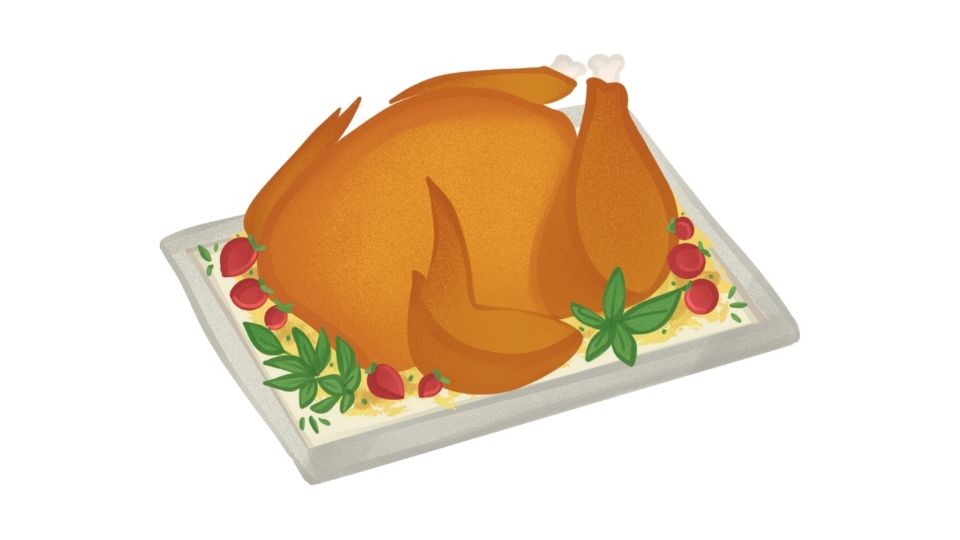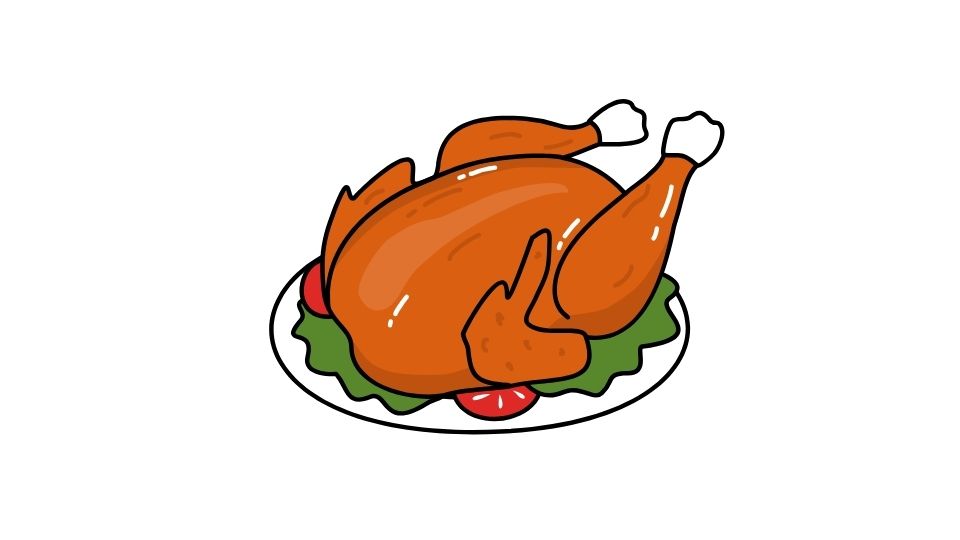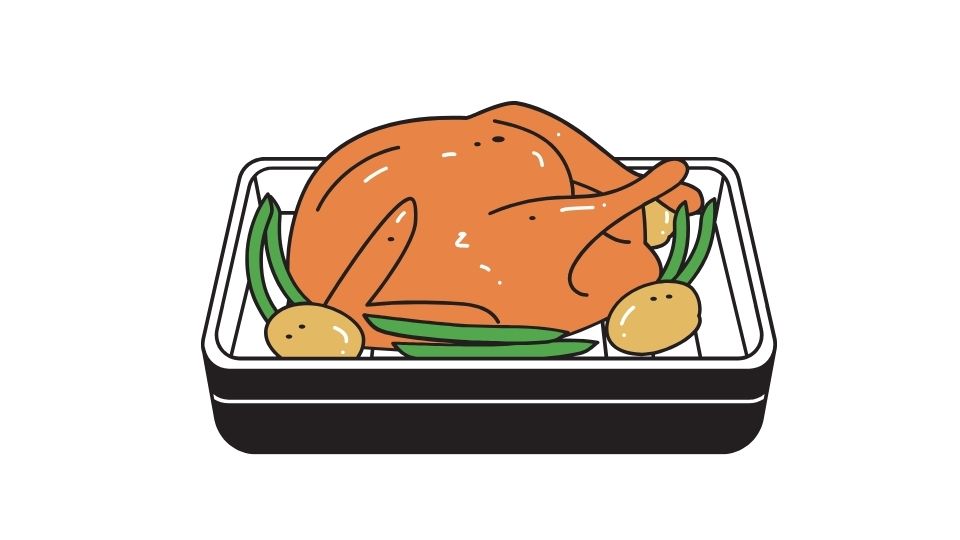How Many Calories in Rotisserie Chicken?

Is there anything in the water, air, or a grocery store that’s more convenient than a hot, juicy rotisserie chicken?
I’m not sure there is. But how many calories are in that sizzling bird that looks SO good after a long day at work?
Let’s break down the calorie count, nutrition facts, and everything else you need to know about rotisserie chicken. (Plus I’ll answer if the convenience is worth the tradeoff in nutrition).
Rotisserie Chicken Calories: The Complete Breakdown
First things first: the calories in rotisserie chicken vary dramatically depending on what part you eat and whether you keep the skin on.
Here’s the quick version:
- Chicken breast (no skin): About 106 calories per 100g (the winner for lowest calories)
- Chicken breast (with skin): Around 175 calories per 100g
- Chicken thigh (no skin): Roughly 144 calories per 100g
- Chicken thigh (with skin): A whopping 226 calories per 100g
So if you’re counting calories, the white meat without skin is your best friend. But let’s be honest the skin is where all the flavor lives.
Rotisserie Chicken Nutrition Facts

Rotisserie chicken isn’t just about calories – it’s actually a nutrient powerhouse! Let’s look at what you’re getting in each serving:
| Part & Skin | Calories (per 100g) | Protein (g) | Fat (g) | Carbs (g) |
|---|---|---|---|---|
| Breast with skin | 175 | 26 | 7 | 0 |
| Breast without skin | 106 | 22.5 | 1.9 | 0 |
| Thigh with skin | 226 | 22 | 15 | 0 |
| Thigh without skin | 144 | 18.6 | 7.9 | 0 |
What stands out? Rotisserie chicken has:
- Zero carbs (keto dieters rejoice!)
- High protein (especially in the breast meat)
- Variable fat content (depending on the cut and skin)
One whole rotisserie chicken typically contains about 1,000-1,200 total calories, though this varies based on the size of the bird and how much of the skin and fat you consume.
The Dark Meat vs. White Meat Showdown
Why does dark meat (thighs, drumsticks) have more calories than white meat (breast)? It all comes down to fat content.
Dark meat has:
- More myoglobin (the protein that makes it darker)
- Higher fat content (about 2-3x more than white meat)
- More iron and zinc
- Often more flavor (let’s be real)
White meat has:
- Less fat (making it lower calorie)
- More protein per calorie
- A milder flavor
- A tendency to dry out more easily
The skin adds significant fat and calories to both cuts, but it also adds major flavor and helps keep the meat moist. It’s the eternal dilemma: taste vs. calories.
The Great Skin Debate
Removing the skin can cut the calorie count by 25-45% depending on the cut. But before you automatically toss that crispy goodness, consider this:
A study published in the American Journal of Clinical Nutrition found that most of the fat in chicken skin is unsaturated – the kind that’s actually good for heart health.
So it’s not all bad news if you keep the skin on. That said, store-bought rotisserie chicken skin often contains added ingredients that home-roasted chicken wouldn’t have.
What’s Actually IN Store-Bought Rotisserie Chicken?

Ever wonder why that $7.99 grocery store chicken tastes so good? Here’s what might be in there besides just chicken:
- Salt brine solutions (to keep it moist)
- Sugar (enhances browning)
- Sodium phosphate (helps retain moisture)
- Natural flavors (could be almost anything)
- Carrageenan (thickener)
- Modified food starch (texture enhancer)
Most store rotisserie chickens contain about 550-900mg of sodium per serving. That’s a lot! For comparison, a homemade roasted chicken might have 70-80mg naturally.
The Environmental Working Group found that some store-bought rotisserie chickens contain as much as 25% of your daily sodium limit in a single serving.
How to Make Rotisserie Chicken Healthier

Don’t want to give up the convenience but concerned about nutrition? Here are some quick tips:
- Remove the skin if you’re watching calories or sodium
- Go for breast meat for the highest protein-to-calorie ratio
- Make your own seasoning blend at home to add to plain chicken
- Pair with veggies for fiber and additional nutrients
- Use the leftovers in salads and soups (stretches your dollar too!)
Comparing Rotisserie Chicken to Other Proteins
How does rotisserie chicken stack up against other protein sources? Pretty well, actually:
| Protein (3oz serving) | Calories | Protein (g) | Fat (g) |
|---|---|---|---|
| Rotisserie chicken breast (no skin) | 122 | 24 | 3 |
| Grilled salmon | 177 | 23 | 8 |
| Lean ground beef (93%) | 170 | 22 | 8 |
| Tofu (firm) | 117 | 12 | 7 |
According to Harvard Health Publishing, chicken is one of the most efficient protein sources calorie-wise, especially when prepared without added fats.
Bottom Line: Is Rotisserie Chicken Healthy?

The short answer: Yes, mostly.
Rotisserie chicken is:
- High in protein
- Low in carbs
- Relatively low in calories (especially white meat without skin)
- Convenient and affordable
But be aware of:
- Sodium content in store-bought varieties
- Higher calories if you eat the skin
- Potential additives you wouldn’t use at home
According to Cleveland Clinic dietitians, rotisserie chicken can absolutely be part of a healthy diet – just be mindful of portions and what you pair it with.
As with most foods, moderation is key. And if you’re really concerned about additives, consider making your own “faux-tisserie” chicken at home using a slow cooker or instant pot!
So next time you’re eyeing that golden-brown bird spinning in the grocery store, go ahead and grab it – now you know exactly what you’re getting.

